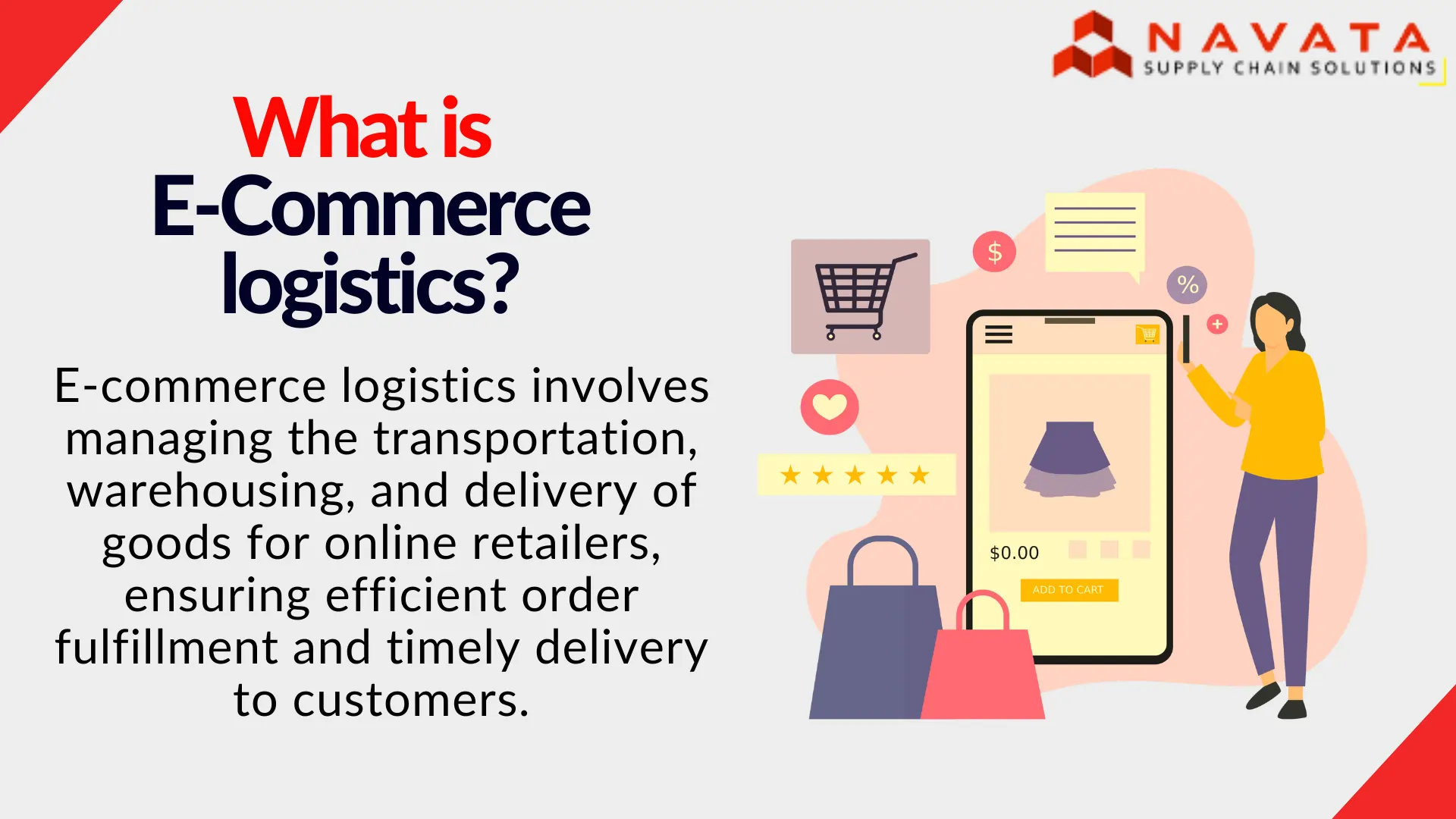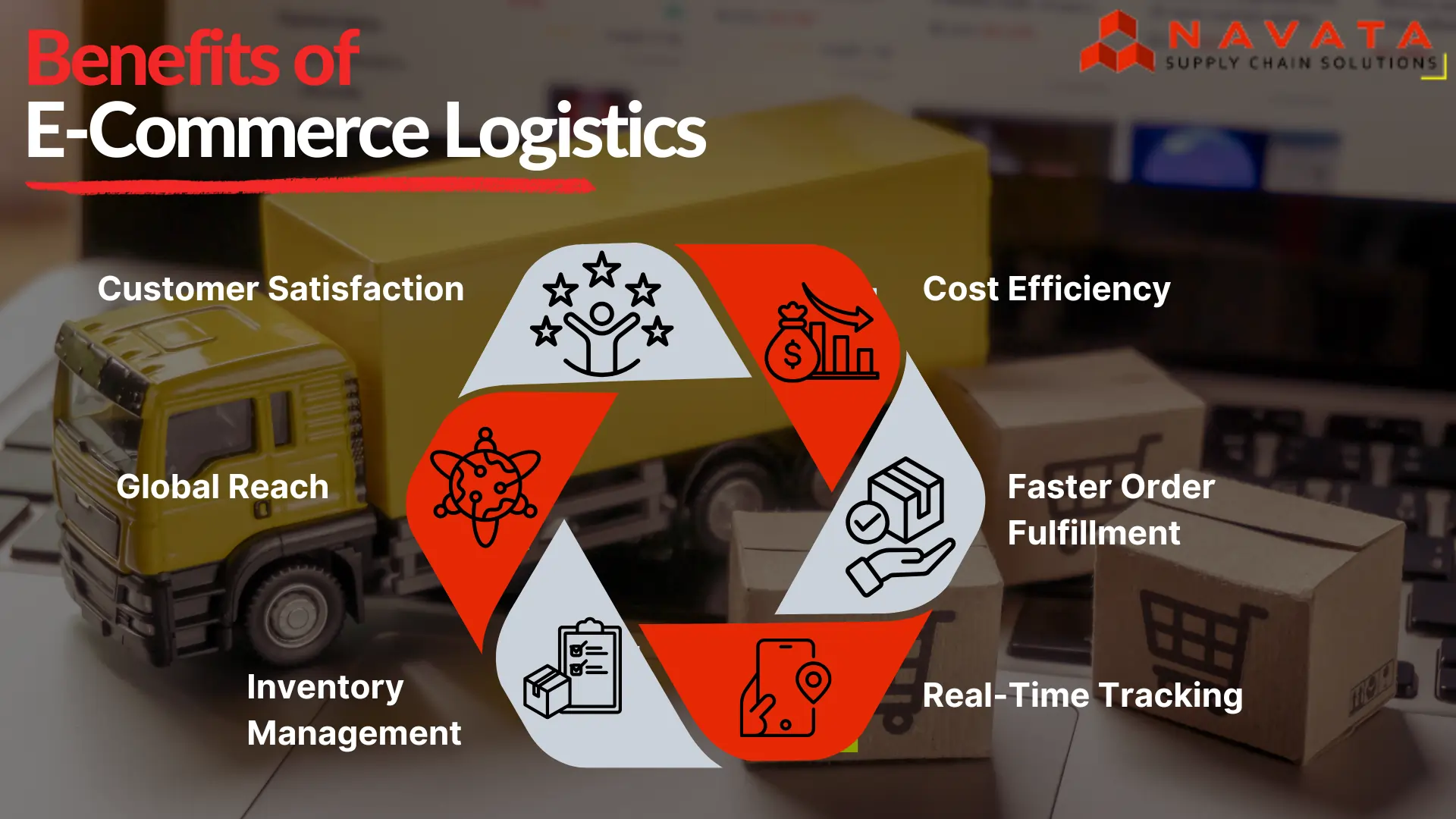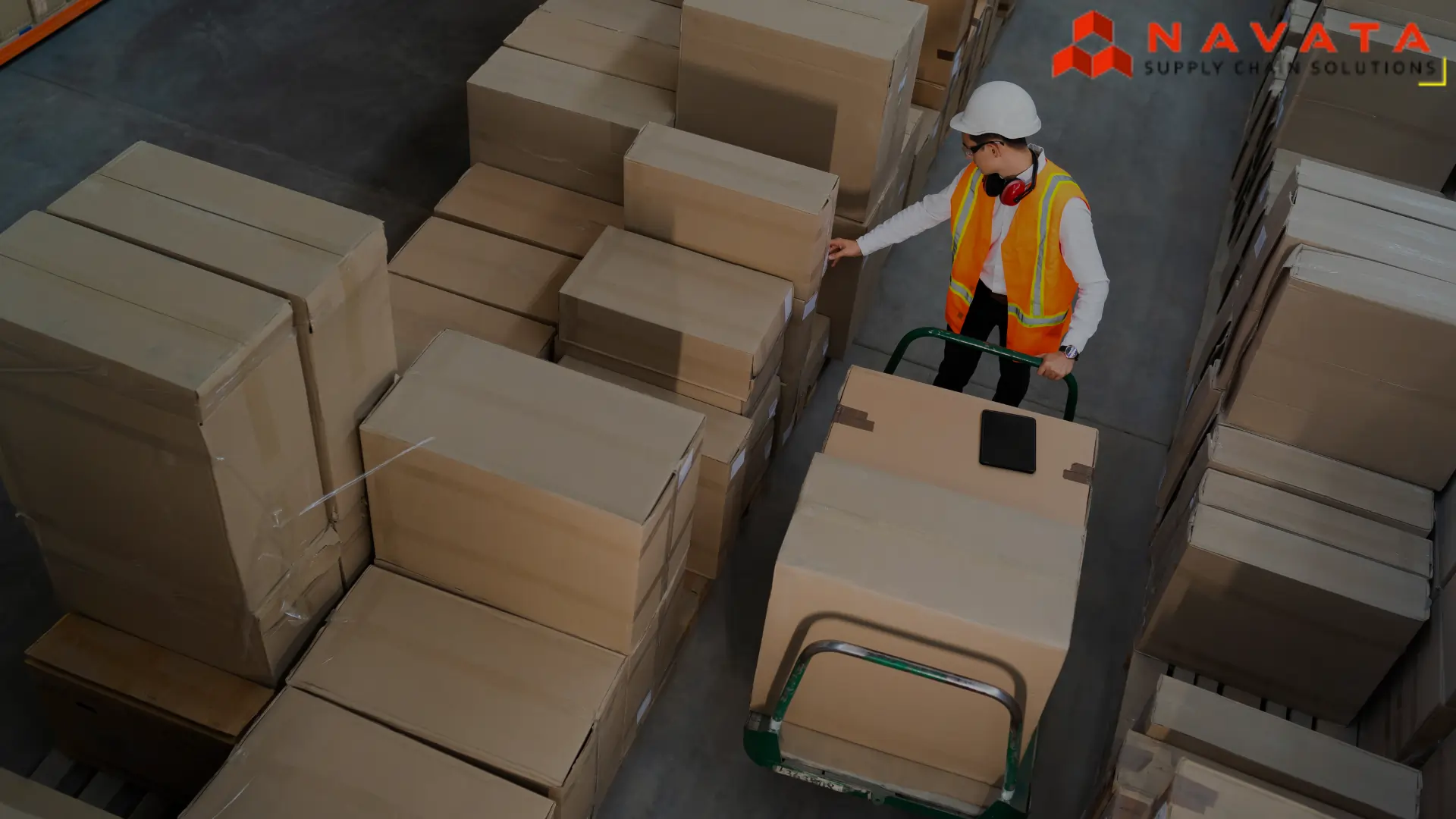What is E-Commerce logistics?
E-commerce logistics refers to the flow of goods from where they are produced to the doorstep of the customer in any e-commerce business. It comprises of stock, movement, storage, and delivery of products. Logistics operations all aim at the timely delivery of products and services to the customers hence improving on customer satisfaction.
ECommerce companies require efficient supply chain management solutions to store, manage and distribute inventory flows, and anticipate increased demand throughout the year. The international shipping, warehousing, and reliable distribution channels are crucial for business continuity. Logistics management also requires knowledge on the international purchase and sale of goods and the various policies that are in placed to ensure that the purchase and sale of goods is legal. New consumer trends require that products be delivered as soon as possible and at a lower cost, which is why logistics must be improved. Implementing technology like real-time tracking and auto-generated services can also enhance the efficiency of the services to be provided to the customer.

Key Components of E-Commerce Logistics
Inventory Management
Inventory management is one of the most important elements of an effective eCommerce supply chain. The application of real-time tracking systems also provides complete visibility of the stock in any business, thereby avoiding overstocking or stock out. These systems make it easy for the various sales channels to be linked to inventory databases to avoid customers buying products that are out of stock. That is, by accurately estimating the needed amount of product, businesses can prepare for sales high-tide times without overloading their storage spaces or having to dispose of leftover products. Furthermore, there are notifications in the low stock of products that can be reordered promptly to avoid interference with the ongoing processes.
Warehousing
Proper placement of warehouses and fulfilment centres is paramount in order to minimize the delivery time and even overall logistics costs. By locating the warehouses near strategic markets, transit distances are reduced, and delivery is faster. Special equipment for storage like racking equipment and automated equipment for handling material offer the highest density of storage and still, easy access to the stock. The fulfilment centre functions in two ways, which is to store and process the orders in a very efficient manner so that the business can easily handle high order volumes. Extending the use of warehousing with real-time data systems increases order accuracy and operations.
Last-Mile Delivery
The last mile of delivery is generally the toughest and the most expensive segment in e-commerce while it is the segment that directly determines the extent of consumers’ satisfaction. Aim at the last mile such as decentralised stock holding at regional depots and hubs makes delivery faster and less expensive. Route optimization software is used to decrease fuel costs and delivery time because it determines the shortest routes. Organisations are also looking for new solutions, for example, drone deliveries or locker solutions to meet new customer needs. Effective and efficient delivery at this stage can go a long way in improving the image of the brand and building customer loyalty.
Distribution Hubs
Subsequently, distribution centres are strategic in minimizing delivery expenses and achieving timely deliveries. If the inventory is spread out across several hubs, that means businesses can get their goods closer to consumers and thus, reduce the time taken to transport them. In this way, this strategy is more helpful for time-sensitive orders as products may be shipped from the nearest hub to the delivery location. Distribution centres also help in the absorption of stocks to different regions depending on the demand that varies from time to time. However, when implemented in combination with sophisticated inventory and transportation management systems, these hubs become essential for designing agile and highly growth-sensitive logistics solutions.
How to Optimize E-Commerce Logistics Operations
Understand Customers
The logistics strategy of any company requires an understanding of the customer’s needs so that it can be properly designed. Customers today want their products fast and with flexibility, so adding features such as same-day delivery or next-day delivery can improve customer satisfaction. Further, giving options for click-and-collect or locker pickups is also helpful for people who do not wish to wait at home. Special arrangements to the local demand variations, for instance, placing products that are in high demand in a given area closer to that locality would enhance faster delivery. Real-time order tracking and delivery notifications also help in maintaining trust with the customers and retaining them.
Simplifying Inventory Control
Stock control reduces interruptions and guarantees that the required stock is always in store. Real-time tracking systems enable organizations to track the quantities of stock in different warehouses in order to avoid overstocking or shortage of stock. This way of operations ensures that businesses have accurate demand forecasts from the sales data collected and that seasonal peaks are well anticipated by companies. Automated reordering systems also minimize the workload since they automatically order supplies once the supply reaches a predetermined level. In particular, for companies that operate at multiple locations, a centralized warehouse management system WMS supplies a broad perspective, which helps to make decisions quicker and more effectually.
Choose Quality Service Providers
Working with reliable partners in logistics can greatly improve your supply chain. Third-party logistics (3PL) refers to the outsourcing of a company’s supply chain activities to an external provider with specialized skills in managing inventory, transportation, and delivery. A good partner will provide flexibility, therefore when in business or during a particular season, operations can easily scale up or scale down. Those providers who have a big delivery network can guarantee coverage of the areas of delivery which includes the remote areas. Moreover, cooperating with companies that provide customized services, for instance, temperature-sensitive storage or fast shipping, allows meeting customers’ requirements efficiently.
Master International Shipping
International shipping is a crucial factor that every organization that is planning to venture into the international market needs to consider. It is necessary to know the customs regulations, import/export laws and tariffs for each of the target countries. This means that working with e-commerce logistics providers who have considerable knowledge in international shipping means that the necessary documentation and compliance processes will run smoothly. Using technology to improve the shipping routes also minimizes the time and expenses of transit, and explaining in detail other expenses such as taxes or duties helps improve customer confidence. Regional warehouses in strategically chosen global locations may also help to extend these advantages by decreasing order shipping time and cost.
Elevate your E-Commerce Logistics with us!
Benefits of E-Commerce Logistics
Customer Satisfaction
Effective eCommerce logistics is a critical element that is useful in improving the customer experience. Thus, fast and reliable deliveries would help organizations meet the expectations of their clients, thus increasing satisfaction levels. It is crucial to fulfill orders as a customer ordered them and in the best shape as they were ordered. Moreover, when shopping, convenience is integrated into the returns process, which makes the customers continue shopping from the specific store. It keeps the customers happy and that is a key to long-term business success as the customers become loyal to the particular brand or product.
Cost Efficiency
Through proper selection of shipping channels, acquisition of bulk shipping and discounts, or proper utilization of efficient warehouse systems, companies can greatly reduce transportation and storage costs. Also, effective logistics control decreases the cost of holding stock through restocking it at the right time depending on the demand. By having enhanced control of logistics operations, companies can enhance their financial results and either provide cost reductions to consumers or invest in business expansion.
Faster Order Fulfillment
Indeed, customers’ expectations have risen due to the increasing competition in the current eCommerce market and they demand quick delivery times. Supply chain management systems enhance the flow of orders in a business organization to ensure that products are processed and delivered as fast as possible. System automation in warehouses can facilitate order picking, packing, and shipping so that there are no long waiting times. Meeting these expectations fast also helps businesses to add more options that customers prefer like same-day delivery or next-day delivery. Failure to meet these expectations is very dangerous if one is to survive in the market competitively.
Real-Time Tracking
Real-time shipment tracking is one of the essential components of modern logistics that helps manage eCommerce shipments. Modern tracking technologies used by businesses and consumers allow them to track the status of orders during the shipping process and minimize the degree of unpredictability. Real-time tracking enables a business to respond to any arising delay or problem and the customers can know the expected time and place of delivery of their consignments. Such visibility helps in building confidence between the company and its customers hence improving on customer loyalty and satisfaction.
Inventory Management
Since eCommerce logistics are closely linked with inventory systems, they can help companies achieve the right stock levels. Keeping real-time inventory control, businesses are able to prevent overstocking, which puts the business’s capital in unsellable commodities and stock out, which denies the business potential sales. Other technological features assist with inventory replenishment, as the system tries to predict the demand, to have products in stock when customers want them. This minimizes the time required for physical stock counts and improves the efficiency of operations in the entire supply chain hence improving service and reducing costs.
Global Reach
In eCommerce logistics, there is flexibility and a possibility of venturing into the international market. Logistics companies provide services of the shipment of products internationally, including the procedures of customs and taxation and other legal formalities required for cross-border sales. Global logistics networks make it possible for organizations to distribute their products and services to different customers around the world while at the same time providing quality services. From having options to ship your products to global markets or employing local delivery services, eCommerce logistics help make it easier for organizations to expand markets and reach a growing global base of customers.

Emerging Trends in E-Commerce Logistics
Demand for Faster Deliveries
The consumer culture in urban areas requires products to be delivered within the shortest time possible, within a day or the next, hence putting pressure to the business to arrange for their supplies in the same manner. To meet such expectations, Companies are now establishing additional fulfillment centers that are nearer to cities. Furthermore, sophisticated techniques such as predictive analysis is being used to forecast customer demand and place inventory in anticipation of such demand. They are also using local contractors for delivery services and crowdsourced fleets to gain shorter delivery cycles. This trend has made fast delivery a luxury to a norm in the e-commerce business environment.
Sustainability in Logistics
The aspect of sustainability is slowly but surely entering the sphere of eCommerce logistics since the industry is interested in minimizing its impact on the environment. Green logistics also entails using environmentally sensitive packaging material for instance biodegradable or recyclable type of packaging. Firms are also adopting carbon-free delivery solutions by using electric or electric/hybrid delivery vehicles and sourcing renewable energy for their deliveries. Delivering routes are also optimized and load-sharing measures add to the efforts of emissions reduction. That way, the businesses not only support the policy of environmental protection but also address the currently increasing need for sustainable products, which in turn stabilizes the brand and increases its popularity among consumers.
Automation and AI
Technological advancement such as robotics and artificial intelligence are influencing eCommerce logistics to deliver more efficiency. Automated sorting solutions in warehouses contribute to fast order handling by sorting packages with high accuracy and a low level of involvement of employees. With the help of AI, the demand forecasting of the tools has the attributes of customer behavior and trends, which helps to optimize the inventory. Robotics is also proving important where AGVs and robotic arms are being used to improve operations such as picking and packing. These technologies help businesses in cutting down various errors, minimising costs and increasing the efficiency of the performance.
Focus on Last-Mile Innovations
The Last-Mile delivery is experiencing a lot of innovation since organisations want to perfect this conical process of logistics. New technologies such as drone delivery for lightweight products in urban and hard to reach areas offer better solutions than conventional methods. Electric delivery vehicles are becoming trends in the market because they are environmentally friendly and have low operational costs that are sustainable. Micro-fulfilment centres are localised delivery centres that can help bring the inventory closer to the consumers and make delivery faster. It is important to note that these innovations do not only improve delivery time and efficiency but also cut expenses, which makes delivery speed and reliability the key to future logistics’ planning.

Conclusion
E-Commerce logistics plays a pivotal role in shaping the customer experience by ensuring timely deliveries, cost-effective operations, and efficient inventory management. The key components such as inventory management, warehousing, last-mile delivery, and distribution hubs all work together to streamline the supply chain. As businesses continue to evolve, adopting technologies like real-time tracking, automation, and AI will be crucial in meeting rising customer expectations for faster, more sustainable deliveries.
Additionally, understanding customer needs, selecting reliable partners, and mastering international shipping are essential for optimizing logistics operations. With the ongoing focus on sustainability, innovation, and scalability, eCommerce logistics will remain central to the success and growth of online businesses in the competitive marketplace.
Thanks For Reading: What is E-Commerce logistics?
Powered By 360Presence

